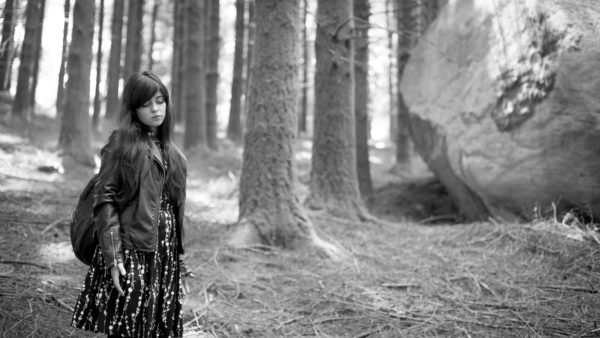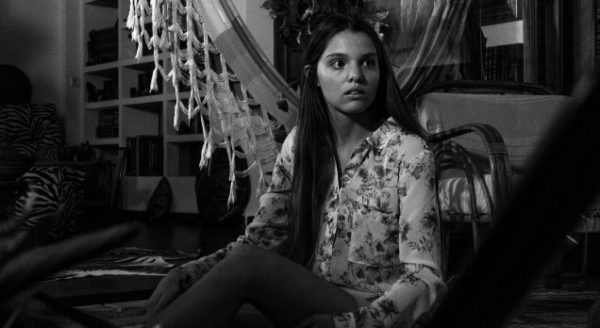
The most notable element of writer/director José Pedro Lopes’ The Forest of Lost Souls (A Floresta das Almas Perdidas) is that it is filmed in gorgeous black and white. It proves to be little more than an attractive stylistic choice than anything; this first feature is relatively straightforward. What the film lacks in substance, however, it more than makes up for in ruthless efficiency. It is a surprisingly cruel film, which is an inherent part of its charm.
The pre-credits sequence is silent save for a voice-over passage about grief. The images of a distraught looking woman wandering about a woods before finally succumbing in a frigid-looking lake are haunting. Following the title card, Pedro Lopes introduces two strangers, Ricardo Alves (Jorge Mota) and Carolina (Daniela Love), who happen upon each other in a notorious suicide forest located somewhere between Portugal and Spain. Ricardo is grief-stricken following the suicide of his daughter, Irene (Lilia Lopes) from the opener, though he doesn’t appear entirely sure about his decision to end his life. By comparison, teenager Carolina seems much more committed; she’s so organized that she has already prepared her video suicide note and concocted an alibi involving a music concert with spotty cell coverage to ensure that she’s not discovered.
As Ricardo and Carolina wander around the forest, gazing at the possessions that other suicides have left behind, they learn more about each other’s lives. Carolina’s demeanour reminds Ricardo of his remaining daughter Filipa (Mafalda Banquart), whom he claims to have failed, along with his wife Joana (Ligia Roque). His regret prompts him to try and change her mind, pleading with Carolina to give her absent father another chance.

There’s something affectionate and familial about their dialogue, but also something sinister. At times their interactions play off their age difference and difference in temperament, but there is always an underlying tension. When they finally reach the lake when Irene drowned herself, the hint of malice is confirmed in a sudden outburst of violence and one of the pair is revealed to be a killer who preys on the vulnerable and despondent.
There is more to The Forest of Lost Souls, but to say more would be to spoil the reminder of the film. It’s not a particularly complicated film and, at a brisk 71 minutes, it doesn’t overstay its welcome. The abbreviated run time and short ~one day duration of the narrative means that characters, particularly those introduced in the second half of the film, are not very fleshed out, but what The Forest of Lost Souls loses in deep characterization it makes up for in brutal efficiency. The kills are swift and painful (albeit not particularly gory or scary).
The lack of frights is a bit of a deficiency, particularly since the film doesn’t have characters for audience to invest in. Still, the solid production values (particularly the picturesque forest scenes), brief run time and solid thrills make The Forest of Lost Souls a quick and enjoyable watch.
3/5